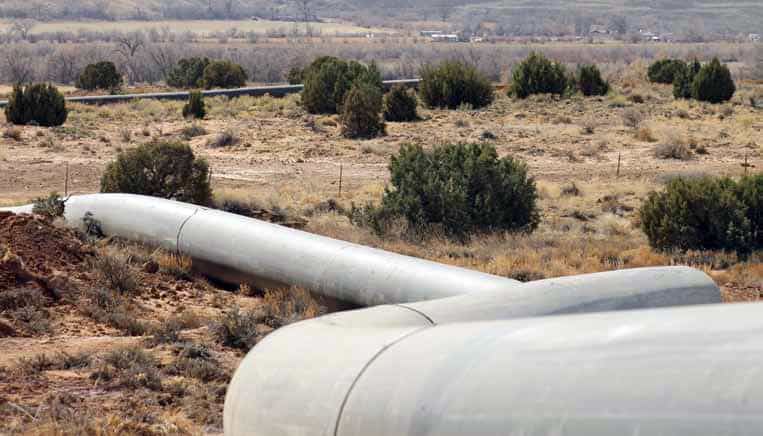HDPE Piping Solution Perfect for Farmers

Since 1905, the shareholders of the Dry Gulch Irrigation Company of Roosevelt, Utah have received irrigation water to over 53,000 acres of farmland through canals and open waterways. In 2010 a plan for an enclosed, pressurized water distribution system was developed. HDPE pipe was the clear choice for the job. The Hancock Lateral Pipeline will replace 21.2 miles of open canals with buried, pressurized HDPE pipe at a total project cost of $6.5 million. The Bureau of Reclamation, the Utah Department of Agriculture, the Natural Resources Conservation Service, the Utah Division of Water Resources and 5,340 shareholders of the Dry Gulch Irrigation Company provided project funding.
The Dry Gulch Irrigation Company contracted J-U-B Engineering to design the Hancock Lateral Pipeline. Tracy Allen, J-U-B Engineering said, “This new piping system will flow up to 80 cubic feet of water per second at a pressure of 60psi.” WL Plastics manufactured over 20 miles of HDPE pipe in sizes from 4” up to 42” in diameter. Over 200 truckloads of pipe were shipped from their Cedar City, Utah manufacturing plant to the jobsite in Roosevelt, Utah. Construction took place in three simultaneous phases by three different contractors; Larson Excavating, Silver Spur Construction, and Pallesen Construction. “Installation was pretty straight forward. It was mostly open trench, but we did have a couple under road HDD (Horizontal Directional Drill),” said Tracy Allen. Two water systems feed the new pipeline; Big Sand Wash Reservoir and Cottonwood Creek. The Hancock Lateral Pipeline will begin at a newly constructed 14-acre-foot reservoir outside of Roosevelt, Utah. Jim Young of Dry Gulch Irrigation said, “This is the first time we (Dry Gulch Irrigation) have used HDPE pipe. It is some really tough stuff.”
The Colorado River provides water for more than 23 million people and irrigation for more than 4 million acres of farmland in the United States, as well as water for about 2.3 million people and 500,000 acres of farmland in the Republic of Mexico. However, damages caused by high salinity levels in the Colorado River are estimated at $750 million a year and could exceed $1.5 billion per year if future salinity increases are not controlled. The Dry Gulch Irrigation Company is located in the Uintah Basin which produces 120,000 tons of off-farm salt that is carried down the Colorado River each year. The Hancock Lateral Pipeline will reduce this by 2,400 tons a year. “The damage from salt on farmland is evident. There isn’t a single field that doesn’t have salt deposits on it,” said Jim Young with Dry Gulch Irrigation.
Having a pressurized water distribution system will allow over 3,000 acres of flood irrigated land to be converted to sprinklers without the use of pumping equipment. This will also eliminate the need for pumping by farmers who are already using sprinklers to irrigate their land. The estimated pumping cost savings are close to $50,000 per year. By enclosing the open canals with leak-tight pressurized HDPE pipe, the Dry Gulch Irrigation Company will deliver 30% more water – water that was originally lost to evaporation and seepage. The new pipeline will also give shareholders an earlier start and later finish to the growing season. The increase in water availability will have a direct effect on crop production. With additional 4,336-acre feet of water, crop production will increase $146 per water share, an overall crop production increase of more than $750,000 annually.